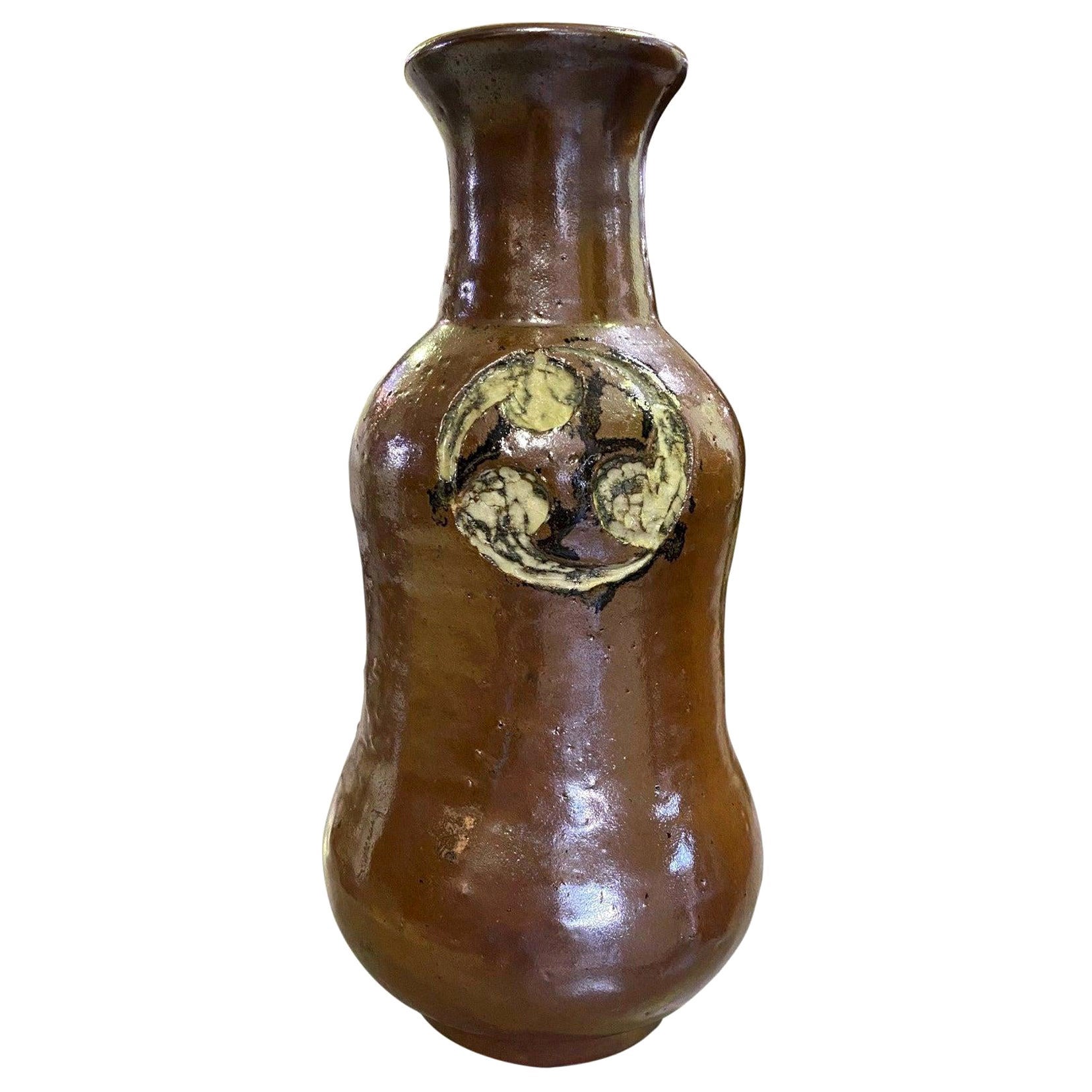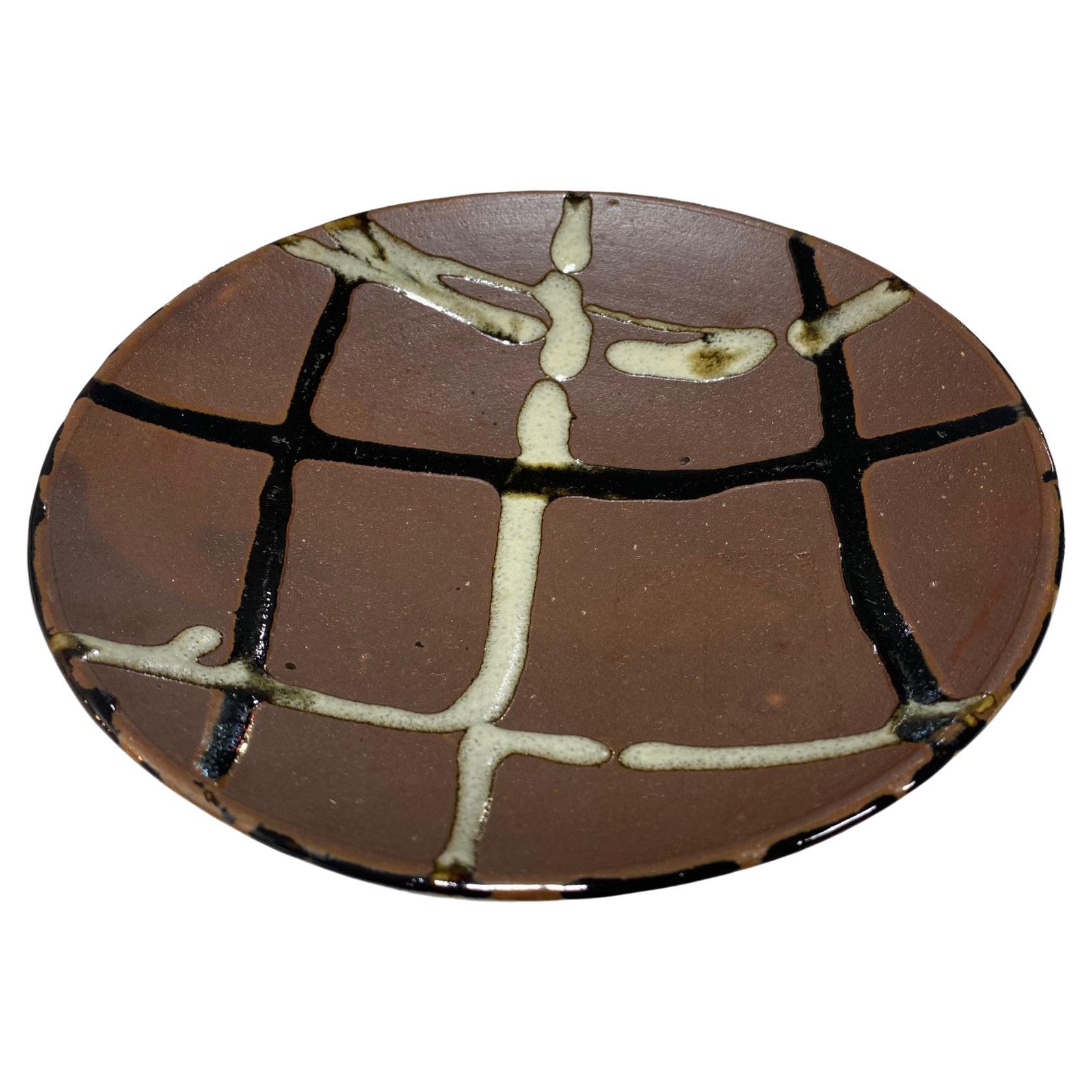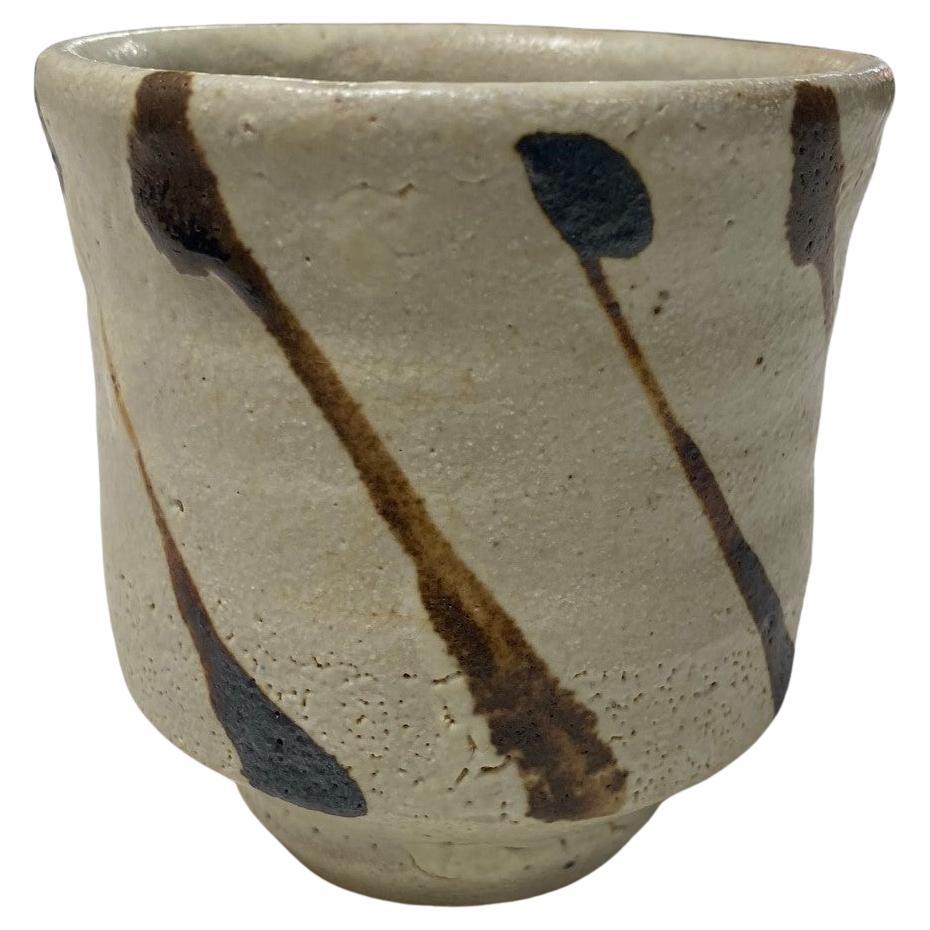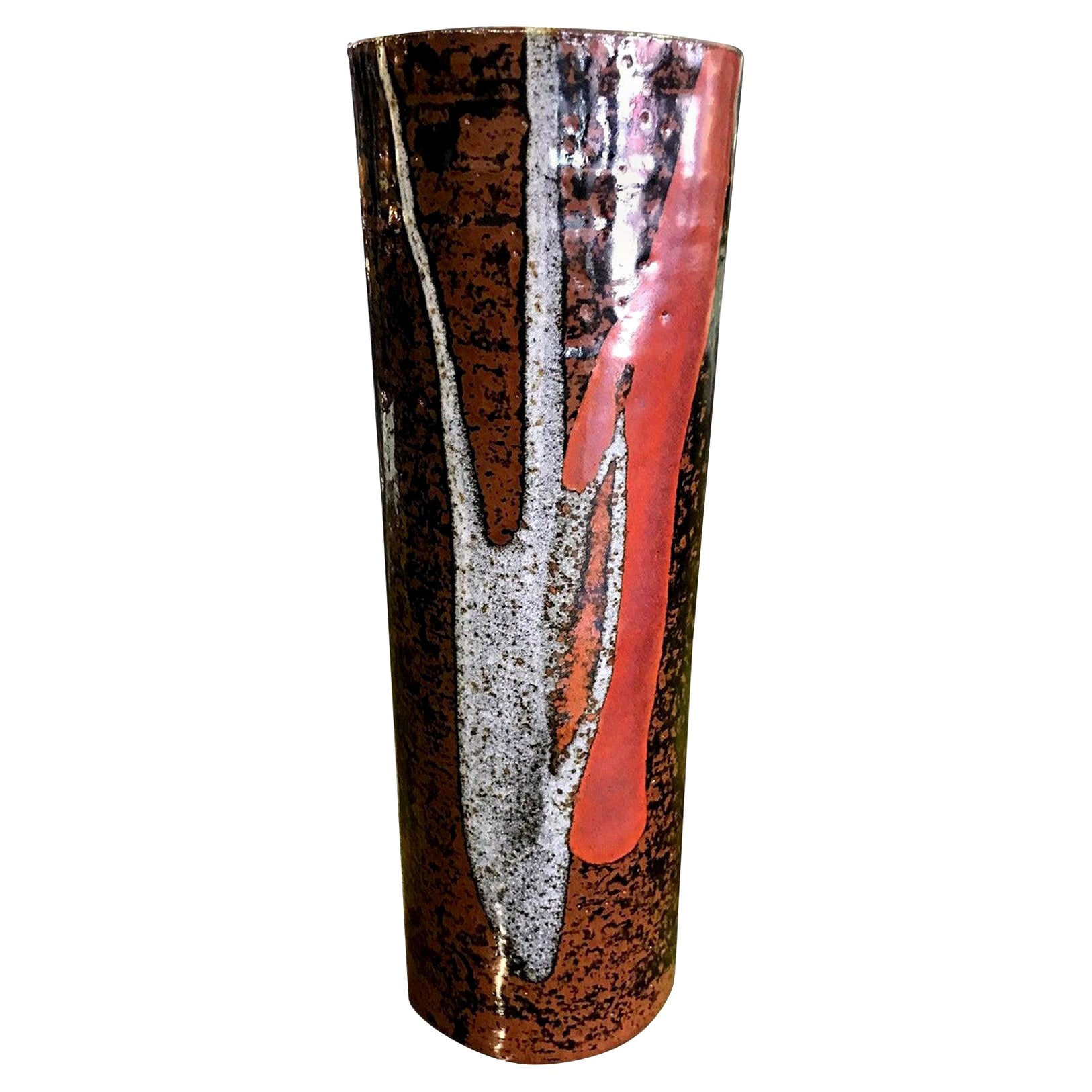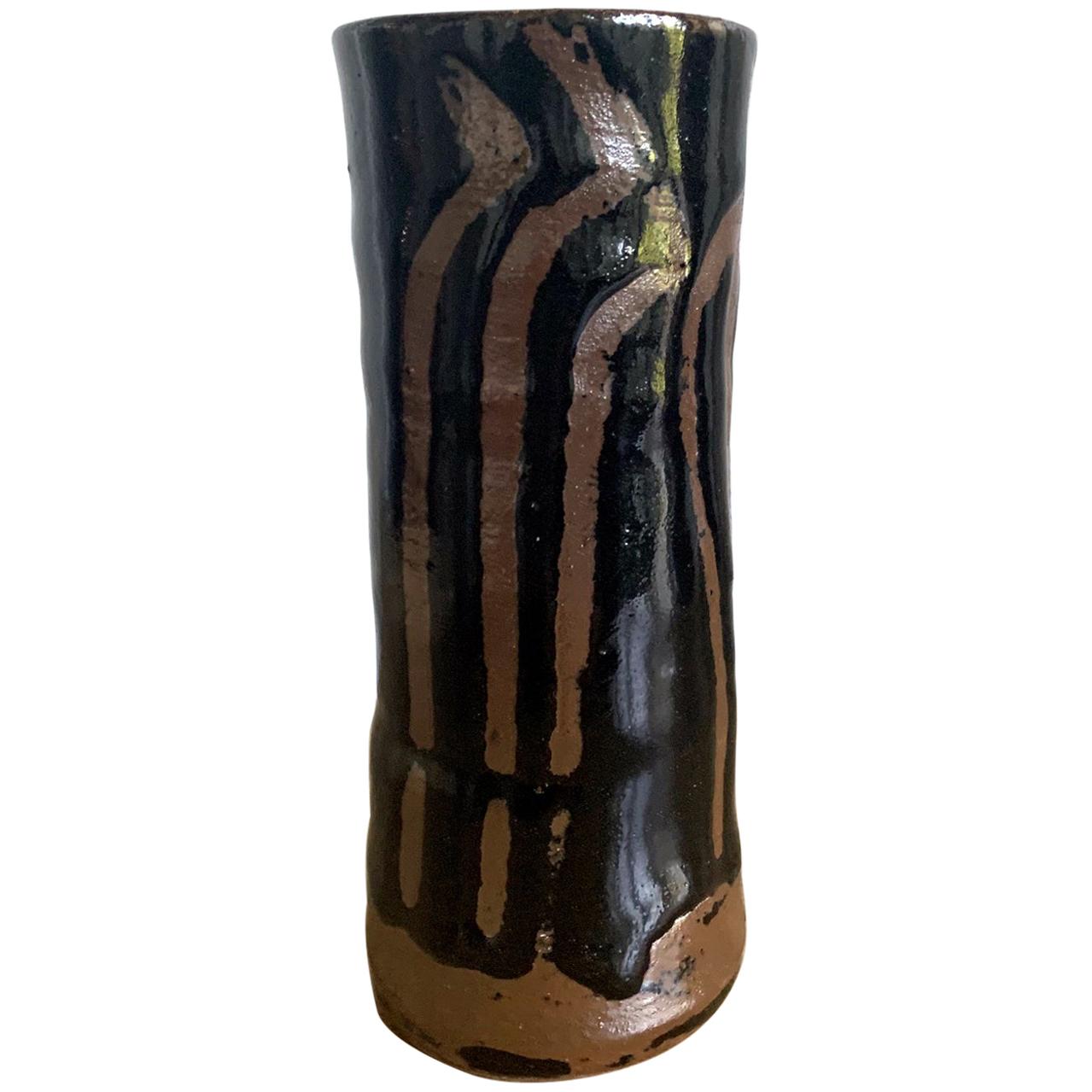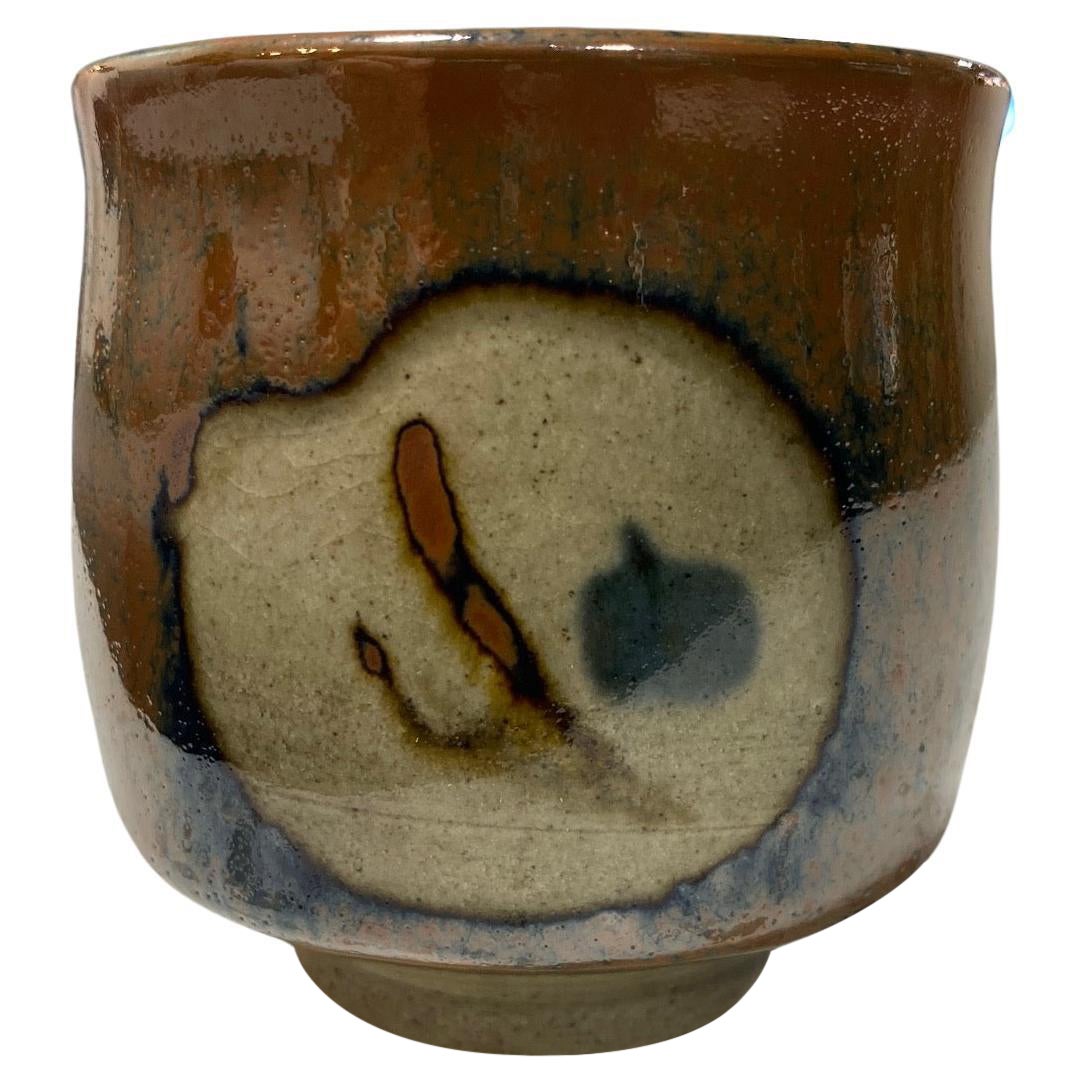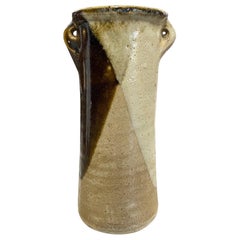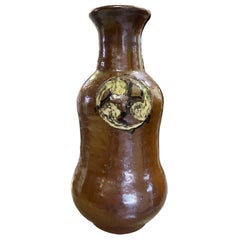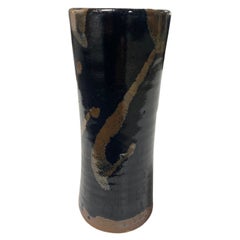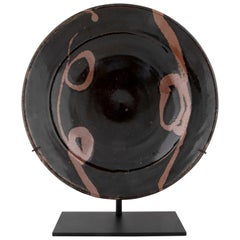
Shoji Hamada Japanese Glazed Bamboo Tetsue Vase with Original Signed Sealed Box
View Similar Items
Want more images or videos?
Request additional images or videos from the seller
1 of 14
Shoji Hamada Japanese Glazed Bamboo Tetsue Vase with Original Signed Sealed Box
About the Item
- Creator:Shoji Hamada (Artist)
- Dimensions:Height: 8 in (20.32 cm)Diameter: 4.25 in (10.8 cm)
- Style:Showa (Of the Period)
- Materials and Techniques:
- Place of Origin:
- Period:
- Date of Manufacture:Mid-20th Century
- Condition:The vase is in very good to excellent vintage condition with no discernable flaws, chips, cracks, etc... (please see photos). The original box shows natural wear and is missing 2 of 4 wood base frames. A simply gorgeous and stunning work overall.
- Seller Location:Studio City, CA
- Reference Number:1stDibs: LU2254320366112
About the Seller
4.9
Platinum Seller
These expertly vetted sellers are 1stDibs' most experienced sellers and are rated highest by our customers.
1stDibs seller since 2016
765 sales on 1stDibs
More From This SellerView All
- Shoji Hamada Japanese Earth-Toned Glazed Vase with Original Signed Sealed BoxBy Shoji HamadaLocated in Studio City, CAAn exquisite, beautiful flower vase by master Japanese potter Shoji Hamada featuring an example of his popular two-color, sumptuous earth-toned ...Category
Early 20th Century Japanese Showa Ceramics
MaterialsStoneware
- Shoji Hamada Mingei Kakiyu Kaki Glaze Vase with Original Signed Sealed BoxBy Shoji HamadaLocated in Studio City, CAAn exquisite, beautifully crafted, and designed gourd vase by master Japanese potter Shoji Hamada, which features a fine example of his famed rich Kaki or persimmon glaze. The original Hamada stamped/sealed and signed box is included. Rare to find such a beautiful piece in such impeccable condition with its original signed box. Hamada named this vase Kaki-Yu-Kabin (flower vase with Kakiyu glaze). A very rare form. One Japanese ceramic dealer whom we know said he had only seen one or two other examples like this by Hamada before. This work is sure to shine in any Japanese pottery/art collection or setting. Shoji Hamada was designated a Living National Treasure in Japan in 1955. In 1968 he received Japan's highest artistic award the Order of Culture. His work can be found in collections and museums worldwide including Tokyo’s Japan Folk Art Museum and The Tate Museum...Category
Mid-20th Century Japanese Showa Ceramics
MaterialsStoneware
- Shoji Hamada Tenmoku Glaze and Kaki Trailing Vase and Original Signed Sealed BoxBy Shoji HamadaLocated in Studio City, CAAn exquisite, beautifully crafted Japanese pottery vase by master potter Shoji Hamada featuring Hamada's famous signature tenmoku glaze with kaki trailing. The original Hamada signed and sealed wood storage box is included as well as the written appraised signature of his son Shinsaku Hamada. The vase also comes with a printed artist profile/sales brochure of Hamada (featuring some of his other presumably available work). It appears this piece was offered at the Keio Department store in Shinjuku, Tokyo. At first glance, this may seem odd but in fact, this is quite an honor in Japan. This store is known for selling and exhibiting such high-profile artists and potters as Bernard Leach, Lucie Rie, Gyokudo Kawai, Shiko Munakata, Kawai Kanjiro, and Rosanjin Kitaoji. A major goal of many ceramic artists in Japan is to have a one-man exhibition in a department store. For many Westerners, this is a strange concept. Some of the larger department stores have up to three or four dedicated galleries showing concurrent art exhibitions. A well-known artist's exhibition can bring in hundreds, often thousands, of customers to a store and increase revenue for other sales in the millions-of-yen range. These exhibits are usually longer running and highlight a potter's career, like a Living National...Category
Mid-20th Century Japanese Showa Ceramics
MaterialsStoneware
- Shoji Hamada Japanese Mingei Pottery Plate with Original Signed Sealed BoxBy Shoji HamadaLocated in Studio City, CAAn exquisite, unique plate by master Japanese potter Shoji Hamada, a fine early example of his iron pigment brushed and glazed bamboo hakeme motif. The original Hamada stamped or sealed and signed box is included. Rare to find such a beautiful piece in such impeccable condition with its original signed box. This work is sure to shine in any collection or setting. Shoji Hamada was designated a Living National Treasure in Japan in 1955. In 1968 he received Japan's highest artistic award the Order of Culture. His work can be found in collections and museums worldwide including Tokyo’s Japan Folk Art Museum and The Tate Museum...Category
Early 20th Century Japanese Showa Ceramics
MaterialsStoneware
- Shoji Hamada Japanese Tenmoku & Nuka Pottery Plate Original Signed Sealed BoxBy Shoji HamadaLocated in Studio City, CAAn exquisite, unique work by master Japanese potter Shoji Hamada, a fine early example of his tenmoku and nuka trailing decoration glaze technique. Hamada first coated the plate with a thin slip made from a local clay or ochre. This particular clay is rich in iron and provides a darker unglazed background for the trailed Nuka and Tenmoku glazes to pop and radiate (which Hamada poured from a ladle in unique and spontaneous patterns). The original Hamada signed and stamped/sealed box...Category
Mid-20th Century Japanese Showa Ceramics
MaterialsPottery, Stoneware
- Shoji Hamada Tenmoku Kaki And Nuka Glaze Vase With Original Signed Branded BoxBy Shoji HamadaLocated in Studio City, CAAn exquisite, beautifully crafted Japanese Mingei pottery vase by master potter Shoji Hamada featuring Hamada's famous signature tenmoku glaze with kaki finger wipe decoration and a ...Category
Mid-20th Century Japanese Showa Ceramics
MaterialsPottery, Stoneware
You May Also Like
- Japanese Ceramic Vase Mingei Style Hamada ShojiBy Hamada ShojiLocated in Atlanta, GAA heavily potted stoneware vase in cylindrical form, decorated with abstract strokes in iron rust glaze (known as Persimmon Glaze in Japanese) on a black glazed background. The pattern suggests autumn grasses, and it was applied with free hands. The vase is attributed to Japanese potter Hamada Shoji...Category
Late 20th Century Japanese Arts and Crafts Ceramics
MaterialsCeramic
- Japanese Mingei Glazed Tea Pot with Kintsugi by Shoji HamadaBy Shoji HamadaLocated in Atlanta, GAA Japanese stoneware tea pot by Hamada Shoji (Japanese 1894-1978) circa 1960-80s. The teapot is of the classic form and of a strong style of Mingei (folk ...Category
20th Century Japanese Modern Ceramics
MaterialsCeramic
- Charger Attributed to Shoji Hamada On Contemporary StandBy Shoji HamadaLocated in Stamford, CTShoji Hamada Japanese clay charger with black glaze and terracotta toned glazed decoration, circa 1960s. On contemporary stand. The piece is unsigned and as such cannot definitively ...Category
Vintage 1950s Japanese Folk Art Ceramics
MaterialsClay
- Japanese Glazed Ceramic VaseLocated in Palm Desert, CAVery unique tall Japanese vase with abstract pattern in a variety of brown tones. The deepest brown glaze is raised, giving the vase a wonderful tac...Category
Late 20th Century Japanese Organic Modern Vases
MaterialsCeramic
- Mid Century Studio Pottery Stoneware Bottle Vase with Cut Sides, Signed, 1970sBy Warren MacKenzie, Shoji HamadaLocated in Chatham, ONMid Century studio pottery stoneware bottle vase with cut sides - rich red glaze over a cream base - maker's mark stamp to the base rim (unknown/unidentified potter) - country of origin unknown - circa 1970's. Excellent vintage condition - minor flea bite/glaze chip to the rim - rough/unglazed patches - no loss - no damage - no restoration. Size/Dimensions - Large - 5" (13 cm.) diameter x 8 3/8" (21.3 cm.) high. Note - In the style of 20th century British studio potters William Marshall...Category
Late 20th Century Mid-Century Modern Ceramics
MaterialsCeramic
- Japanese Porcelain Glazed Vase with Dragon Design Mazuku KozanBy Makuzu KozanLocated in Atlanta, GAA porcelain vase with dragon design by Japanese imperial potter Makuzu Kozan (1842-1916), circa 1900s. The vase is made in what is considered early phase of his underglaze period during late Meiji era. In a classic baluster form, the surface of the vase was decorated with a slithering dragon in underglaze iron red circulating the exterior among pink clouds. The animated rendering of the dragon is fine and detailed, with five claws, scales, long tails and highlighted eyes. The pink cloud is misty and called Morotai or the hazy style, created with a unique technique developed in Kozan's studio called fuki-e by blowing the pigment powders onto the surface. Kozan Studio experimented with newly available colors from the west starting in the 1880s, which resulted in the expansion of the palette and style that bridged the east and west aesthetic tradition. Marked in underglaze blue on the base. Known also as Miyagawa Kozan...Category
Antique Early 1900s Japanese Japonisme Ceramics
MaterialsPorcelain
Recently Viewed
View AllMore Ways To Browse
Showa Stoneware
Japanese Blue Porcelain
Japanese Blue Gold
Antique Chinese Figures
Japanese Red Gold
Chinese Export Large
Asian Painted Flowers
Asian Bird Chinese
China 17th
China Famille
Chinese Famille
17th Century China
Chinese Porcelain Qing
Antique Qing
Japanese Porcelain Imari
Asian China Sets
Japanese Imari Porcelain
Asian Ceramics Ceramics Antique

